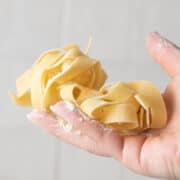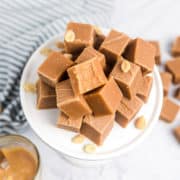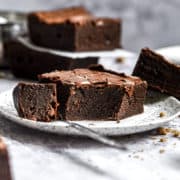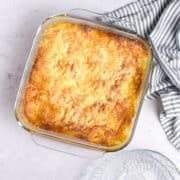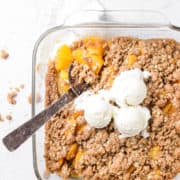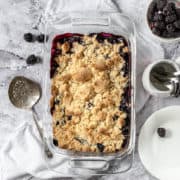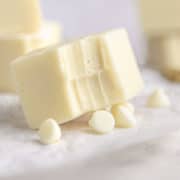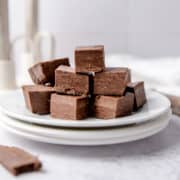Fresh pasta is one of the most delicious things to come out of Italy and you can either buy it readymade or try making your own. If you're going to the effort of making your own pasta, it's well worth knowing how to store fresh pasta dough and fresh pasta.
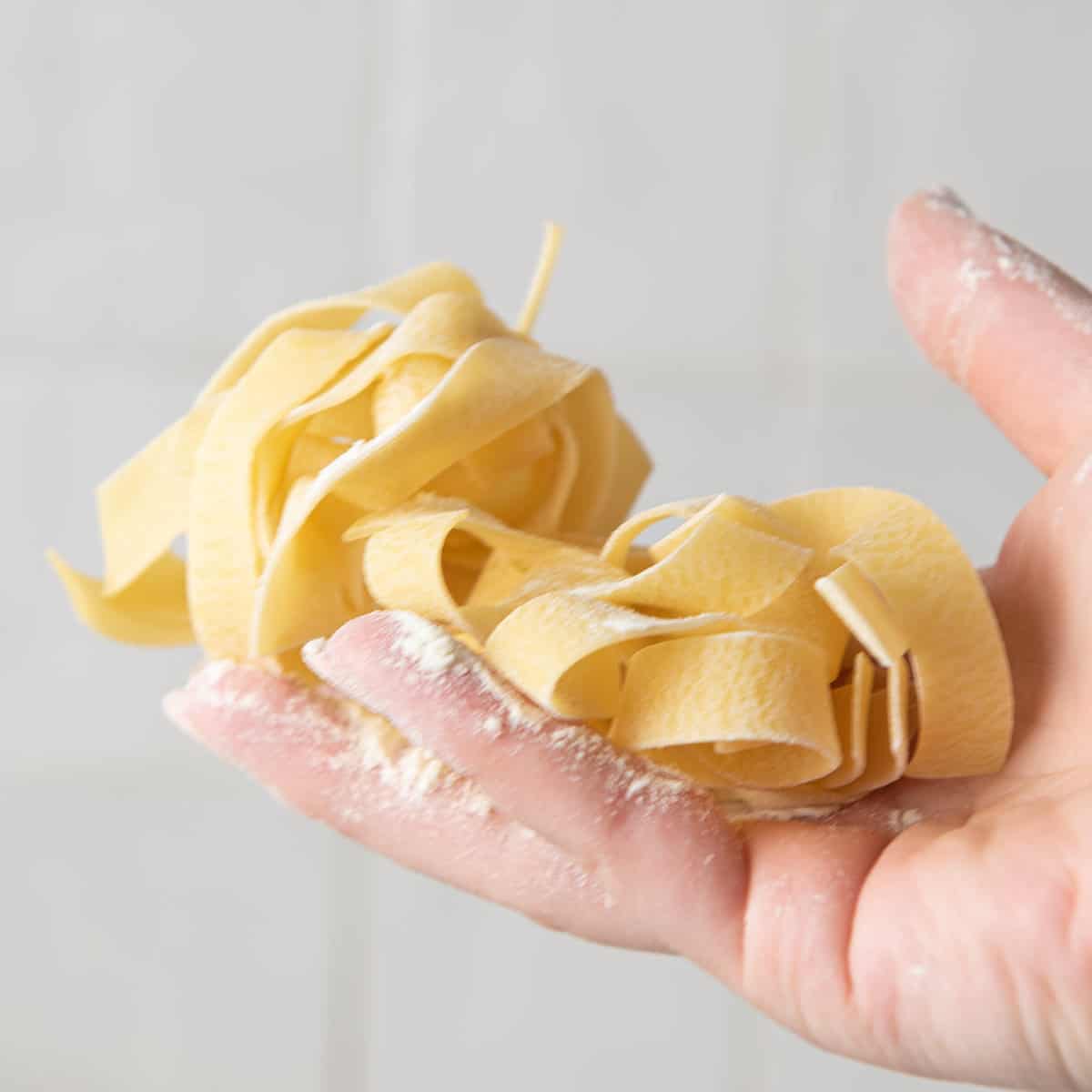
Jump to:
It's also a good idea to know the best way to store grocery store fresh pasta, so you can enjoy the wonderful flavor and texture before it goes bad.
Because fresh pasta doesn't stay good for more than a few days, it's best not to buy or make it until you're ready to cook it. You can find various types of fresh pasta at the grocery store, including pasta shapes such as spaghetti and linguine and filled pasta like ravioli.
If I'm craving pasta, I like to buy pasta, and whichever pasta sauce would contrast the best. For example, spinach and cheese ravioli is nice with a tomato and basil sauce, while beef or chicken tortellini is always good with a cream-based sauce.
Something else I love about cooking fresh pasta is it cooks in just a few minutes, so if we're all hungry I can have dinner on the table in mere minutes! It's so great for making a quick meal on a busy weeknight.
Fresh pasta can be served with added meat, vegetables, and fresh herbs, to make it into a more filling and complete main dish. It's also great tossed in extra virgin olive oil, as a side dish.
What is Fresh Pasta?
Unlike dried pasta, which is made with water and semolina flour, fresh pasta is made with "00" flour or plain flour, along with eggs and water. 00 refers to the flour texture, so 0 is coarse, 000 is extra-fine and 00 is somewhere in between.
You will find it in the refrigerated section of the grocery store. It looks moist rather than dried and has a pliable, soft texture. There is of course a place for dried pasta, since it keeps for a long time, up to two years in fact, and is always handy to have in the pantry, but the flavor and texture of fresh pasta are just so good!
If you want to try making your own fresh homemade pasta, a pasta machine makes the process easier. It isn't difficult to make pasta but you will probably need some practice to get proficient at it.
It's typically made with wheat, but there are also pasta made from buckwheat, rice, barley, or another grain, along with low-carb pasta alternatives. Some pastas are enriched which means it has added nutrients like iron and Vitamin B.
The enriched ones are refined when processed, which means removing the wheat germ and wheat kernel from the bran, and this also removes a lot of the nutrients. You can also get whole-grain pasta which isn't refined at all.
So, is fresh pasta a nutritious choice? Well, it has a lot of carbohydrates in each serving as well as gluten which gluten-intolerant people should avoid. It does offer fiber along with some iron, selenium, phosphorus, and potassium, plus other trace vitamins and minerals.
How to Choose Fresh Pasta
If you're buying rather than making fresh pasta, you should make sure the packaging is intact, the pasta looks moist and the expiry date hasn't passed or isn't going to pass before you plan to cook it, for the best results.
If you're going to make the pasta, ensure you have the right type of flour (00 flour is a good choice).

How to Store Fresh Pasta
Fresh pasta doesn't keep for very long, so it's important to know how to store it, as well as how to tell if it's bad. Always keep fresh pasta refrigerated rather than at room temperature because it's made using raw eggs. And if you have too much pasta, you can always freeze the fresh noodles.
- Homemade fresh pasta should be stored in the refrigerator and used within 24 hours. Make sure it's in an airtight container.
- You can freeze fresh pasta dough by wrapping it in plastic wrap before putting it in a freezer bag or airtight container. Use it within 4 weeks.
- You can freeze raw fresh pasta noodles by tossing them in some flour (this prevents them from sticking to each other) and then flash-freezing in a single layer on a baking sheet, before transferring them to a freezer-safe container. Use them within 8 months.
- Store-bought fresh pasta should be refrigerated and eaten before the expiry date on the packaging. You can also freeze it in the original packaging for up to 6 months.
- Refrigerate leftover cooked fresh pasta in an airtight container or plastic bag for up to 3 days.
If you're freezing fresh pasta noodles, you don't have to thaw them before cooking. You can just add the frozen pasta to boiling water.
How to Identify Spoiled Fresh Pasta
Is your fresh pasta "pasta" its best? Fresh pasta that has gone bad will have a bad smell. It might have discoloration in places or be slimy. Black or white spots indicate mold. If you see any of these, throw it out.
Common Questions
Yes, you can make your own fresh pasta without a pasta machine or pasta maker it is sure to be delicious! It also works out a lot cheaper than fresh store-bought pasta. After making a dough using flour, eggs, water, and salt, you knead it, chill it, and then roll it out with a rolling pin. You can either make the dough with a stand mixer or food processor, or with good old elbow grease.
Use a pizza wheel or sharp knife to cut the pasta into individual pieces; cut whatever thickness of ribbons you want, tossing them with a little flour so they don't stick together. The size of the noodles depends on your preference and what kind of sauce you're having.
Now, the pasta noodles aren't going to be as uniform as you'd expect from machine-cut pasta, but it will boast a rustic touch and it's fun to make too. If you do want to try the machine version, you should be able to pick up a hand-cranked pasta machine for a few dollars. Use the uncooked pasta within a day (or within a couple of hours for the best results), or freeze it for future use.
Fresh pasta and dried pasta are different in terms of flavor and texture. One isn't necessarily superior to the other but they're not always interchangeable. Dried pasta holds together better because it doesn't get as soft as fresh pasta, so if you're making something and you want the pasta to be firm, choose dried.
For a more delicate texture, perhaps if you're making a light seafood sauce or similar, the softness of fresh pasta might be better. Dried pasta is better in soup or if you're having a rich sauce such as ragu or something meaty.

Interesting Facts
- Fresh pasta was kneaded by foot before machines were invented for the purpose. Pasta dough was tough, so workers would walk all over it to knead it and make it soft.
- While the average American consumes 26 pounds of pasta per year, the average Italian consumes closer to 60 pounds.
- Spoiled fresh pasta can give you salmonella poisoning because it contains raw eggs. If you have any concerns that your fresh pasta might have gone bad or you suspect the growth of bacteria, it's recommended that you throw it out.
- Cooking your pasta to "al dente" (only just tender instead of soft) isn't just about the texture. Al dente pasta takes longer to digest so it actually helps keep you feeling full for longer. Fresh pasta is naturally softer than dried pasta, which means overcooking it can make it fall apart.
Now you know all about how to store fresh pasta and keep it fresh and delicious until you can cook and enjoy it. It's handy to know you can also freeze it if you find you aren't going to cook it for a while.
